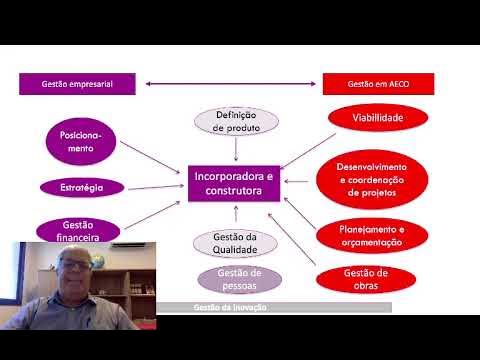Acting on Innovation S01E02 — Innovation vs. Core Business
Summary
TLDRThis video script explores the critical distinction between core business operations and innovation projects in a well-established company. Using the example of a company producing screwdrivers, it explains how core business is predictable, efficient, and risk-averse, while innovation work involves uncertainty, trial and error, and flexibility. The script emphasizes that these two types of projects require different structures, planning, and risk management. By recognizing their differences, companies can allocate resources effectively, avoid stifling innovation, and ensure both short-term stability and long-term growth.
Takeaways
- 😀 Core business work is focused on repeating established processes that are predictable and efficient.
- 😀 Innovation work involves creating something new, which is inherently unpredictable and requires a trial-and-error approach.
- 😀 The predictability of core business work allows for effective project planning and investment with lower risks.
- 😀 Innovation projects cannot follow the same structured plans as core business work because their end goals are unknown.
- 😀 Core business work can be broken down into smaller, manageable blocks with experts focusing on specific tasks, leading to faster execution.
- 😀 Innovation projects require people who can switch between different skills and abstraction levels, as they often involve tackling new, unconquered challenges.
- 😀 The risk in innovation is higher than in core business, but innovation is necessary to avoid obsolescence in the future.
- 😀 It’s important not to have core business and innovation projects compete for the same resources, as this could hinder the success of innovation efforts.
- 😀 Core business work leads to lower-risk investments, while innovation work demands smaller, more cautious investments due to its inherent uncertainties.
- 😀 Successful innovation requires flexibility, adaptability, and a willingness to experiment, which contrasts with the highly structured nature of core business operations.
- 😀 Both core business and innovation are essential for a company’s growth: core business drives profitability today, while innovation ensures survival and relevance in the future.
Q & A
What is the primary difference between core business work and innovation work?
-Core business work focuses on well-established, predictable processes that are optimized over time, while innovation work involves exploring new, unpredictable ideas with the goal of creating something new and valuable.
Why is it easier to plan projects in core business operations compared to innovation projects?
-Core business operations have a clear end goal and established processes, which make it easier to predict outcomes, break tasks into manageable components, and create structured project plans.
How does the level of risk differ between core business and innovation projects?
-Core business projects tend to have lower risk because they are based on established processes, while innovation projects carry higher risks due to their uncertainty and the exploration of unknown outcomes.
What role do experts play in core business projects versus innovation projects?
-In core business projects, experts are essential because the tasks are predictable and involve specialized knowledge. In innovation projects, experts may not be as useful, as the work requires flexibility, adaptability, and the ability to handle new challenges.
Why is it important to separate the management of core business and innovation projects?
-It is important to separate them because they have fundamentally different conditions and requirements. Core business projects require stable, structured conditions, while innovation projects need flexibility and the ability to experiment without rigid constraints.
What is the challenge companies face when trying to work on innovation within a structure designed for core business?
-The challenge is that the established processes for core business work are optimized for predictable, repetitive tasks, making it difficult to manage the uncertainty and experimentation required for innovation.
How does the need for investment differ between core business and innovation projects?
-Core business projects can handle larger investments because they are predictable and carry lower risk, whereas innovation projects require smaller, incremental investments due to the high level of uncertainty and risk involved.
Why is a trial-and-error approach more suitable for innovation projects than for core business projects?
-Innovation projects lack a clear end goal, which makes them unpredictable. A trial-and-error approach allows teams to explore different possibilities and learn from failure, while core business projects are structured to minimize risk and maximize predictability.
What would happen if core business projects were allowed to compete with innovation projects for resources?
-Core business projects would likely receive more funding and attention, potentially leading to the termination of innovation efforts due to their higher risk and uncertainty.
Why is it critical to maintain both core business operations and innovation work within a company?
-Maintaining both is crucial because core business ensures short-term stability and profitability, while innovation secures future growth and helps the company remain competitive and relevant in the long run.
Outlines

此内容仅限付费用户访问。 请升级后访问。
立即升级Mindmap

此内容仅限付费用户访问。 请升级后访问。
立即升级Keywords

此内容仅限付费用户访问。 请升级后访问。
立即升级Highlights

此内容仅限付费用户访问。 请升级后访问。
立即升级Transcripts

此内容仅限付费用户访问。 请升级后访问。
立即升级浏览更多相关视频
5.0 / 5 (0 votes)






